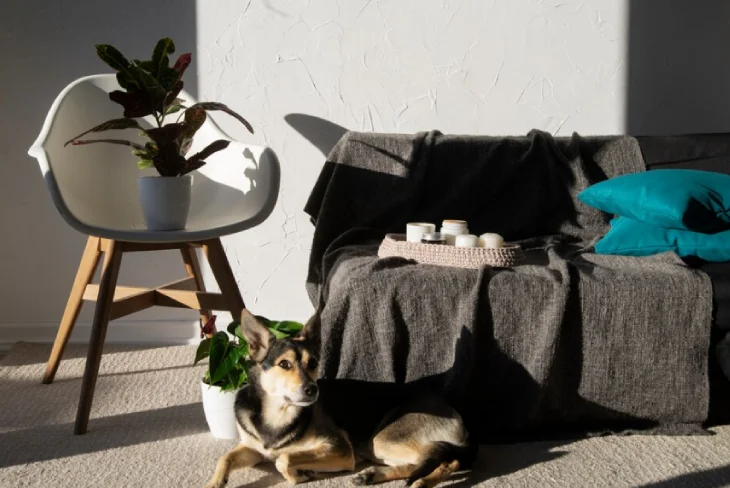Creating a modern and avant-garde home decoration requires a deep understanding of both design principles and the latest trends. This style is not merely about selecting contemporary furniture or painting walls in neutral tones; it’s about integrating innovative ideas that reflect a forward-thinking lifestyle. The concept of modern home decoration is constantly evolving, driven by technological advancements, cultural shifts, and a desire for spaces that are as functional as they are aesthetically pleasing.
Understanding Modern and Avant-garde Design
The foundation of modern and avant-garde design lies in simplicity, functionality, and a clean aesthetic. It strips away unnecessary details, focusing on essential elements that contribute to the overall harmony of the space. This approach is characterized by open floor plans, minimalist furnishings, and a neutral color palette often accented with bold, vibrant hues.
In modern home design, every element serves a purpose. Furniture is not just decorative but also functional, often featuring sleek lines and unembellished surfaces. Materials such as glass, steel, and concrete are favored for their durability and ability to convey a sense of modernity. Additionally, natural light plays a important role, with large windows and open spaces designed to bring the outside in, creating a seamless connection between the interior and the exterior.
Avant-garde design, on the other hand, pushes the boundaries of conventional aesthetics. It is daring and experimental, often incorporating unusual materials, shapes, and colors. This style challenges traditional design norms, introducing elements that are unexpected and thought-provoking. Avant-garde interiors are dynamic, often featuring asymmetrical layouts, abstract art, and unconventional furniture. The goal is to create a space that is not only visually striking but also intellectually stimulating.
Incorporating Technology into Modern Design
A key component of modern and avant-garde home decoration is the integration of technology. In today’s digital age, smart homes are becoming increasingly common, with technology seamlessly integrated into the fabric of the home. From automated lighting systems to voice-controlled appliances, technology enhances both the functionality and aesthetics of modern homes.
Lighting is one area where technology plays a important role. Smart lighting systems allow homeowners to control the ambiance of their space with the touch of a button. Whether it’s adjusting the intensity of the light or changing its color, these systems offer a level of customization that was previously unimaginable. Moreover, LED lighting, known for its energy efficiency and versatility, is often used to highlight architectural features or create mood lighting.
Another aspect of technological integration is the use of home automation systems. These systems allow for the centralized control of various home functions, such as security, heating, and entertainment. By integrating these systems into the design, the home becomes a cohesive unit where technology and aesthetics work together to create a seamless living experience.
Sustainability in Modern Home Design
Sustainability is a growing concern in modern home decoration. As environmental awareness increases, more homeowners are seeking to incorporate sustainable practices into their home design. This includes using eco-friendly materials, maximizing energy efficiency, and incorporating renewable energy sources.
Eco-friendly materials such as bamboo, reclaimed wood, and recycled metals are popular in modern home design. These materials not only reduce the environmental impact of the home but also add a unique, natural element to the space. Additionally, modern homes are often designed with energy efficiency in mind, featuring insulation, double-glazed windows, and energy-efficient appliances.
Renewable energy sources, such as solar panels, are also becoming more common in modern home design. These systems reduce the home’s carbon footprint while also providing a reliable source of energy. By incorporating these elements into the design, homeowners can create a space that is both modern and environmentally responsible.
The Role of Modern Design Architects
Architects play a pivotal role in shaping modern and avant-garde home design. Their expertise and creativity are essential in translating the homeowner’s vision into a tangible reality. Modern design architects are not just concerned with the aesthetics of a space; they also consider its functionality, sustainability, and how it interacts with its surroundings.
These architects often employ a holistic approach, considering every aspect of the home’s design, from the initial concept to the final details. They work closely with clients to understand their needs and preferences, ensuring that the design reflects their lifestyle and personality. This collaborative process is essential in creating a home that is both beautiful and functional.
Architectural services have evolved to meet the demands of modern homeowners. In addition to traditional architectural design, many firms now offer a range of services, including interior design, landscape design, and project management. This integrated approach ensures that every aspect of the home is considered, resulting in a cohesive and well-planned space.
Modern design architects are also at the forefront of innovation in home design. They often experiment with new materials, technologies, and design techniques to create spaces that are both cutting-edge and timeless. Whether it’s incorporating sustainable practices or designing smart homes, these architects are constantly pushing the boundaries of what is possible in home design.
Creating a Cohesive Modern Design
A successful modern and avant-garde home design is cohesive and harmonious. This requires careful planning and attention to detail. Every element, from the furniture to the lighting to the artwork, should work together to create a unified aesthetic.
One of the key principles of modern design is balance. This can be achieved through symmetry, where elements on either side of a central point are identical or mirror each other. Alternatively, asymmetry can be used to create a more dynamic and visually interesting space. In either case, the goal is to create a sense of harmony and order.
Color is another important aspect of modern design. Neutral colors, such as white, gray, and beige, are often used as a base, creating a calm and serene environment. These colors can be accented with bold, vibrant hues, such as red, blue, or yellow, to add interest and energy to the space. The key is to use color strategically, ensuring that it enhances the overall design rather than overwhelming it.
Texture also plays a important role in modern home decoration. The contrast between smooth and rough surfaces, shiny and matte finishes, or hard and soft materials can add depth and interest to a space. For example, a sleek, polished concrete floor can be softened with a plush wool rug, or a smooth leather sofa can be contrasted with a rough-hewn wooden coffee table.
Conclusion
Modern and avant-garde home decoration is about more than just creating a stylish space; it’s about creating a living environment that reflects your personality and lifestyle. By incorporating elements of modern design, technology, sustainability, and architectural innovation, you can create a home that is not only beautiful but also functional and forward-thinking.
Whether you’re working with a modern design architect or tackling the project on your own, the key is to approach the design process with an open mind and a willingness to experiment. Don’t be afraid to push the boundaries and try something new. After all, the essence of modern and avant-garde design is its ability to challenge the status quo and create something truly unique.




No Comment! Be the first one.